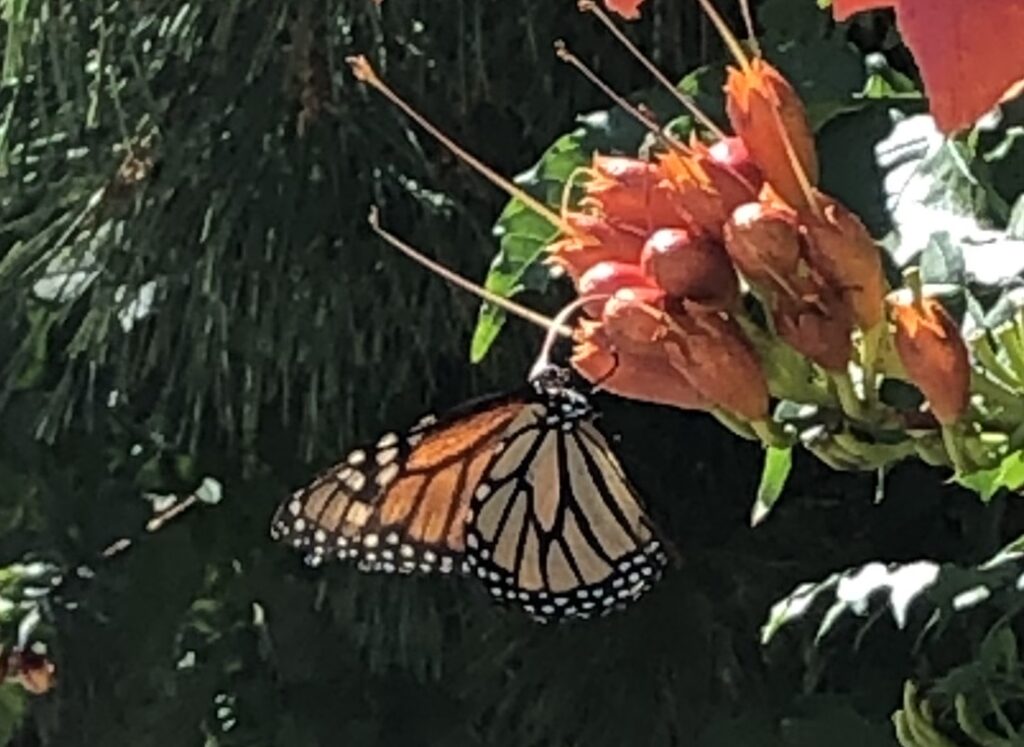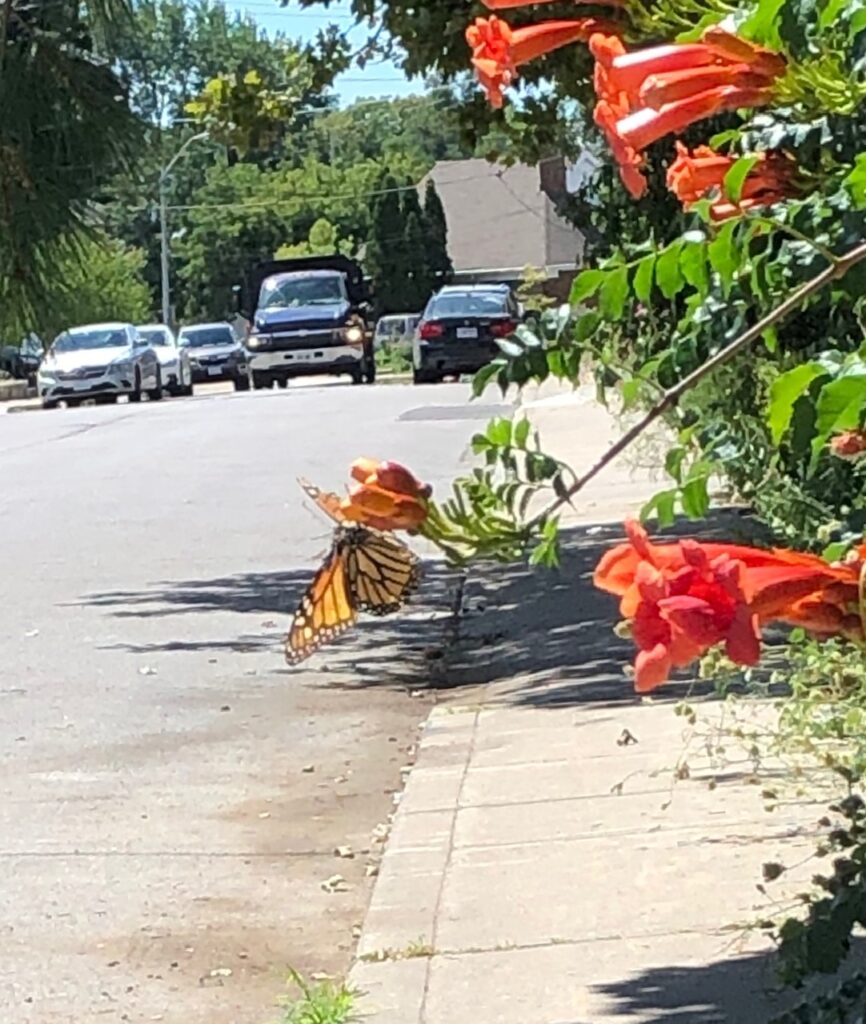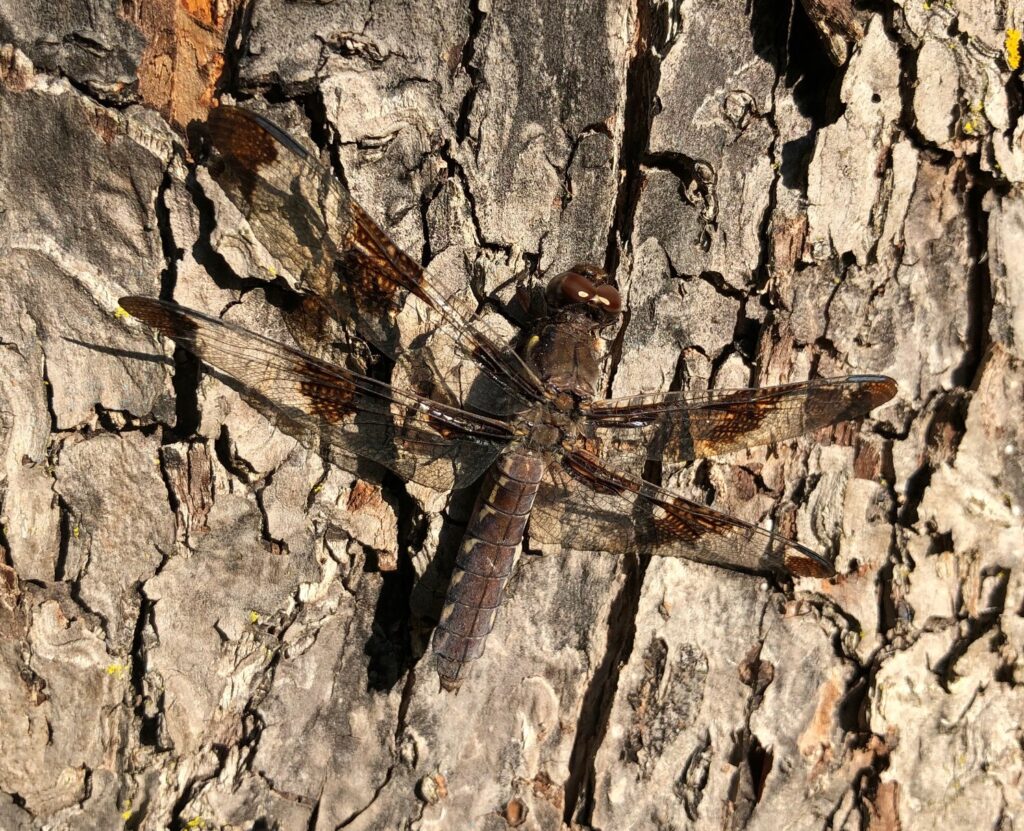
Today is National Flight of the Monarch Day! Here is the official proclamation, (complete with whereas and therefore … who speaks or writes like that??):
WHEREAS: Monarch butterflies are one of the most iconic and cherished insects in North America. Their epic 5,000-kilometre migration from eastern Canada to the forests of central Mexico begins in late August each year. In 2013, the eastern population of monarch butterflies dropped by 95 per cent, the smallest recorded population since the mid-1990s. Since 2013, the population has rebounded, thanks in part to the collective efforts of thousands of individuals, groups and communities across Canada, but the monarch’s future remains in serious peril. Flight of the Monarchs Day is an opportunity to celebrate the growing movement to protect monarch butterflies and the astonishing phenomenon of their migration as their epic journey southward begins.
THEREFORE, I do hereby proclaim August 22, 2020 as Flight of the Monarch Day.

In Wild City, Doug Bennet & Tim Tiner write: “Monarchs employ the same strategy as migrating hawks, spiralling upwards on warm columns of rising air, called thermals,climbing up to 1500 metres (5,000 feet), then gliding in the wind until they hook on to another thermal. By early November, often hundreds of millions of the orange wind-riders from all over eastern North America converge on about a dozen volcanic mountains in central Mexico’s Sierra Madres. Yet none of has ever made the trip before.”
As part of the City of Toronto Biodiversity Series of booklets, the city published Butterflies of Toronto – A Guide to Their Remarkable World. The following are excerpts from the guide:
“Monarchs in southern Ontario have two or more generations each year, with the adults living about 30 days. However, late summer adults emerge in a state of suspended reproductive development known as “reproductive diapause.” These are the true migrants that can live up to nine months, reaching the wintering sites in Mexico, maturing over the winter months and beginning the northward journey to the southern U.S. in mid- to late February.”
“Female Monarchs generally lay a single egg on the underside of a milkweed leaf, probably laying 300 to 400 eggs over the course of their lifetime. It is simply remarkable that Monarch caterpillars can feed on milkweed plants. Milkweed has evolved certain traits to protect it from becoming insect food. It has a bed of prickly hairs on its leaves that a caterpillar must remove before it can puncture the plant. If the caterpillar isn’t careful, the milky latex that oozes from the puncture can entrap and kill it. Finally, cardiac glycosides within the leaf are toxic to most insects, but Monarch caterpillars are able to redeploy the plant’s toxins for use in their own defense, retaining them in their body tissues even throughout the pupal and adult stages.”
You can read the complete Butterflies of Toronto guide here.

